You’ve probably seen something like this in a history-based K-drama.
In the movies and K-dramas, this punishment is referred to by a few different names but it’s usually known as 곤장형 (gohn-jang-hyong, 棍杖刑). A gohn-jang is the wooden club that looks like an oar with a wide and flat face that you beat the criminal with. Hyong is punishment.
This was usually the punishment for thieves, robbers, military, and political criminals. As you can see in the above picture, they would strike down on the bare buttocks and back of the thigh area. This was supposedly so painful and “unusually cruel” that it was basically tantamount to the death penalty. The TV dramas sort of romanticized it but even the most strapping wrongdoers would lose consciousness after about 10 strikes. Imagine what it would’ve been like for women and older folks. Records indicate that only after about 3 or 4 strikes, the flesh would cut open so badly that you could see the bones.
The Joseon Kings, fully aware of what kind of damage gohn-jang-hyong did to people, put a hard limit on how many strikes local magistrates could hand out, which was 30. But not everyone adhered to the royal edict, I’m told.
But the truth is, unlike how it’s been portrayed in TV dramas, this corporal punishment was used very sparingly because people have often died from it. Many who survived the punishment never walked again.
** When I was growing up in Korea, we used to get beaten gohn-jang style by teachers routinely if any one of us would get out of line during class. This was when I was 13, in the 7th grade. I’ll perhaps write about that in a separate posting.
Then, there is this geo-yeol-hyong (거열형, 車裂刑). This is often confused with something called neung-ji-cheo-cham (능지처참), but they’re different although they’re obviously both death penalties. As you can see in the picture above, one of the dramas portrayed it realistically. I never watched the drama but I guess the scene was so gruesome that there was much buzz online—and that’s how I found out about it. Geo-yeol literally means, “to rip apart, tear with a vehicle.” Reserved for traitors and people found (often framed) to have planned coup d’etat, they would tie a rope to each limb and the neck and have either cows or horses pull in each direction until… you know…
Then, there’s the sa-sa (사사, 賜死). Again, shown often in the K-dramas, this is another death penalty by being forced to drink poison called sa-yak (사약, 賜藥 “the bestowed medicine”). This was considered a milder version of the death penalty in that the criminal was “allowed to commit suicide from a bestowed medicine from the King.” The poison drink was apparently made from the wolfsbane I talked about in my previous posting about the mysterious death of a Joseon King.
There were a few records of some people not dying from the sa-yak, however. One of the most respected and well-known scholars during all of Joseon Dynasty Song Shi-yeol (송시열) fell victim to political infighting and was given the most dubious reason for the death penalty and the resulting sa-yak at the age of 83!! Really, people? Apparently, the poison didn’t work on him, and he had to drink 3 bowls of it before he succumbed.
In what is almost comical story, if not involving a death of a person, there was a man named Im Hyong-su (임형수) during the 17th century who was sentenced to death by way of sa-sa after writing a critical memo about the reigning Queen. Im drank 18 bowls of sa-yak and nothing happened to him. 18 bowls of poison!! They ended up hanging Im instead.
no image provided for the next one
Neung-ji-cheo-cham or cheo-sa (능지처참 or 능지처사) is the most heinous form of corporal punishment. And this is the word most people confuse with the geo-yeol punishment described above. It makes you cringe just reading about it. It involves cutting parts of your body off slowly little by little until you die. What’s worse, they will keep treating you to stop the bleeding so that you will stay alive as long as they will allow it.
There is a photographed record of such punishment that was actually carried out in 1910 in China and it’s more horrifying than it sounds. There is a Chinese record that states that there had been a case where 6000 cuts were made before the victim (criminal) died. Unbelievably, this happened more frequently than you might imagine during the Joseon Dynasty.
And there is something called paeng-hyong (팽형, 烹刑). This was reserved for corrupt local officials who brought about undue hardships to common people. To paeng is to “boil” something. No further explanation necessary, right?
Except that this existed only in books, and no such punishment was ever really carried out. But they couldn’t let the criminal go unpunished, so this is what they did instead. They forced the criminal to climb into a huge empty pot, sit in there for a few seconds, and climb back out. They only “simulated” the paeng-hyong but here’s the catch. That person was officially recorded in the books as dead, all his possessions taken away, and was forbidden to have any contact with anyone, not even his family, and lead a completely isolated life for the rest of his life.
So, there you have it.

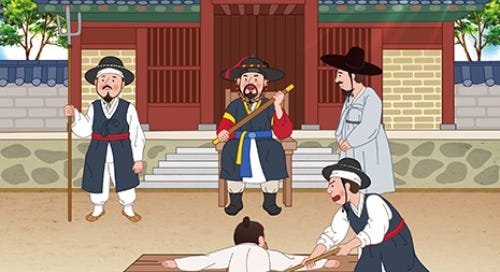


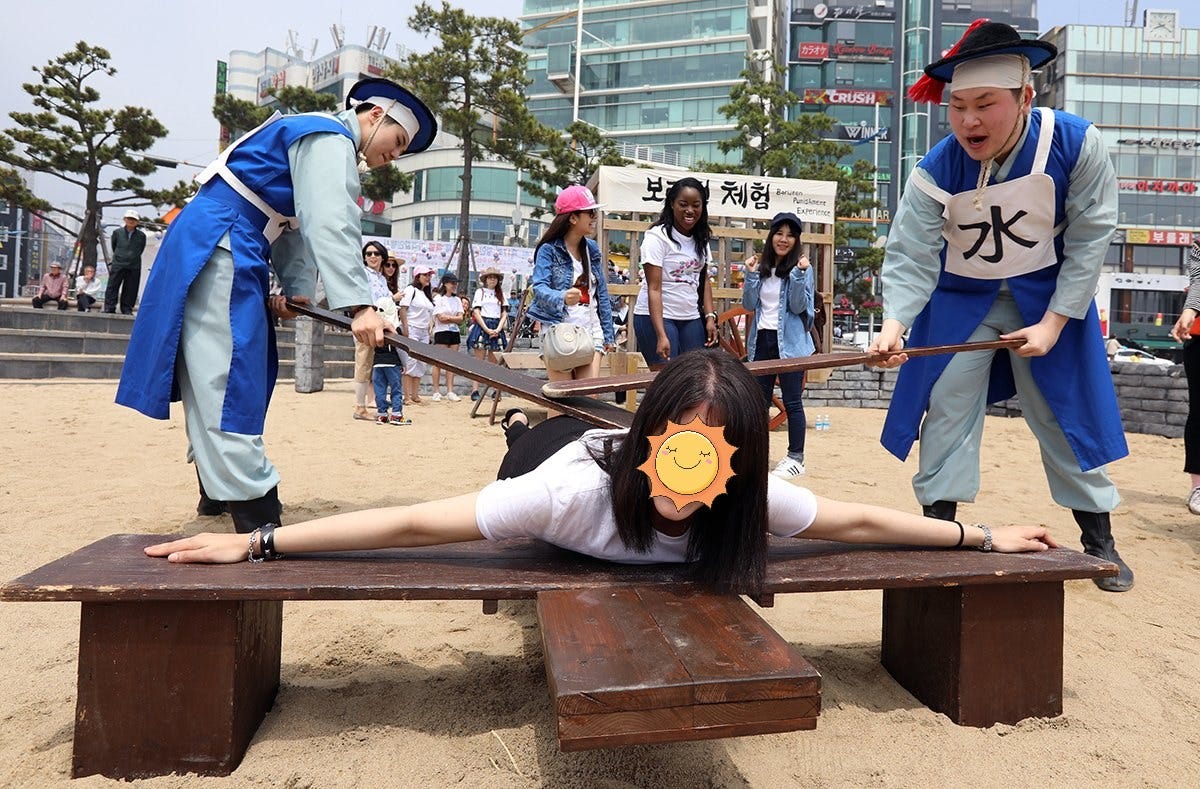

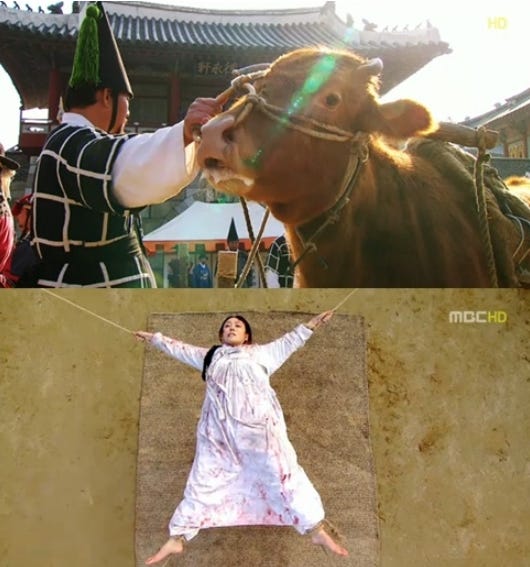
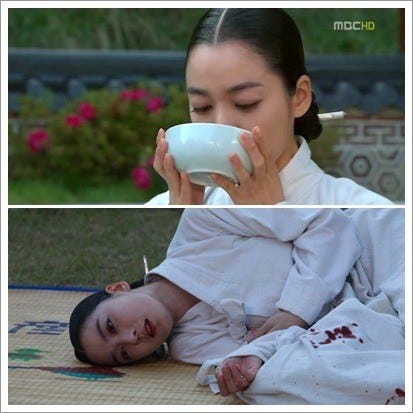
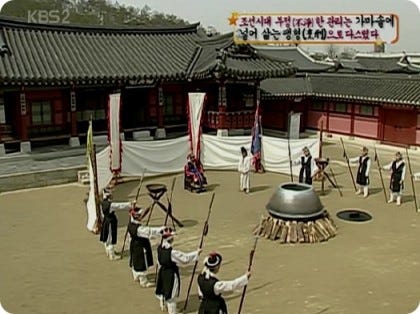
Not having thought too much about how common corporeal punishment was throughout history, your article is educational and helps me understand some of the K-drama elements. Several Korean tv-dramas I have watched recently mention some of the historical types of punishment you discuss here. In the historical tv-drama, "The King's Affection", paeng-hyong [팽형] is a punishment mentioned and not knowing the Korean history when I viewed The King's Affection, I had to look up what paeng-hyong meant. There are also two scenes of sa-sa [사사] in The King's Affection, and now I know the history behind those scenes.
Your post illuminates where some more contemporary punishments found their roots. In "Twenty Five Twenty One", there are scenes where gohn-jang-hyong [곤장형] paddling and student abuse are depicted as happening in a high school as recently as 1998-99.
The whole premise of the drama, "The Lies Within", employs neung-ji-cheo-cham [능지처참] as a dramatic device.
Yes, great post!